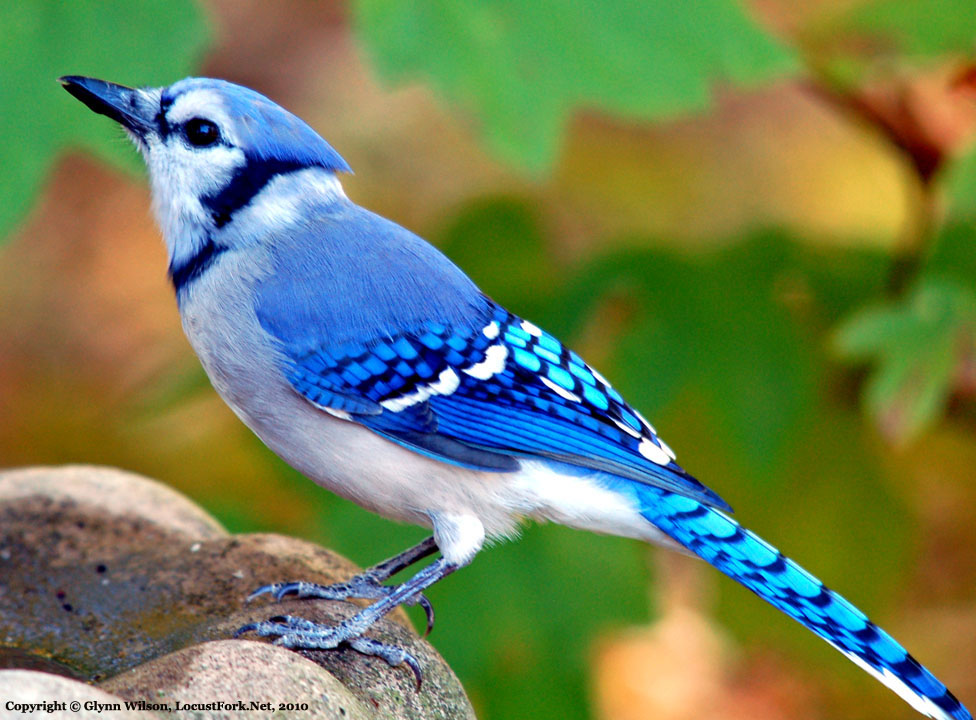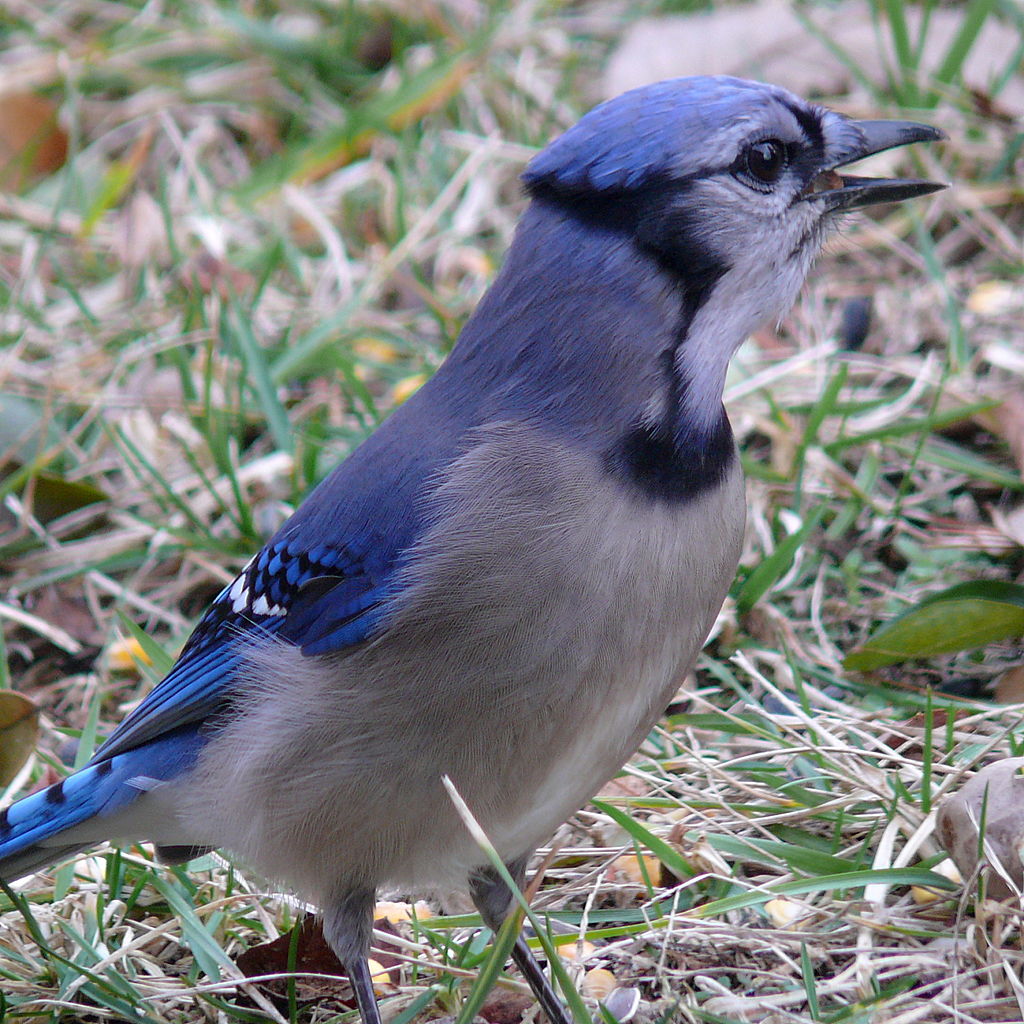Blue Jays
The Blue Jay, a common sight in North American woodlands, is a bird of striking beauty and remarkable intelligence. Its vibrant plumage, a combination of blues, whites, and blacks, makes it easily recognizable and contributes significantly to its social interactions.
Color Variations and Geographic Distribution
Blue Jays exhibit variations in their plumage coloration across their geographic range, reflecting adaptations to their specific environments. The most prominent variation is in the intensity and hue of the blue feathers. While the classic Blue Jay boasts a bright, almost iridescent blue, individuals in some regions display a duller, more grayish-blue. This difference is often associated with the availability of specific pigments in their diet. For example, Blue Jays residing in areas with abundant blueberries, a rich source of anthocyanins, tend to have brighter blue plumage.
- Eastern Blue Jays: Found in the eastern United States and Canada, these birds exhibit the most vibrant blue coloration. Their plumage is characterized by a bright, almost iridescent blue, with white underparts and a black cap and wings.
- Western Blue Jays: Found in the western United States and Mexico, these birds generally have a duller, more grayish-blue plumage. Their white underparts are often tinged with buff or brown, and their black markings are less pronounced.
- Florida Blue Jays: These birds are found in Florida and exhibit a unique combination of colors. They have a darker blue plumage with a more pronounced black cap and wings, and their underparts are often tinged with a reddish-brown color.
Blue Jay Behavior: Blue Jays

Blue jays, with their vibrant plumage and boisterous calls, are a common sight in North American woodlands. Their intelligence and adaptability are evident in their nesting habits, foraging strategies, and complex vocalizations.
Nesting Habits
Blue jays are cavity nesters, choosing to build their nests in tree cavities, abandoned woodpecker holes, or even in man-made structures like birdhouses.
| Nest Construction | Nest Location | Egg-Laying Patterns |
|---|---|---|
| Blue jays build their nests using twigs, bark strips, and grasses, lining the interior with softer materials like feathers and moss. | They prefer to build their nests in deciduous trees, particularly oaks, maples, and elms, often choosing locations that provide camouflage and protection from predators. | Blue jays typically lay 3-6 eggs per clutch, with the incubation period lasting approximately 17 days. |
Food Sources and Foraging Strategies
Blue jays are omnivorous, consuming a wide variety of foods throughout the year.
- Insects: They actively hunt for insects, including caterpillars, beetles, and grasshoppers, using their sharp beaks to capture prey.
- Nuts and Seeds: They are particularly fond of acorns, beechnuts, and hickory nuts, often caching them for later consumption, demonstrating remarkable spatial memory.
- Fruits: Blue jays enjoy various fruits, including berries, apples, and cherries, contributing to seed dispersal in the forest.
- Small Vertebrates: Occasionally, they prey on small vertebrates like lizards, frogs, and even young birds.
Blue jays are opportunistic feeders, adapting their foraging strategies to different environments and seasons. They often raid bird feeders, stealing food from other birds, and can be seen scavenging for scraps in urban areas.
Vocalizations
Blue jays are known for their loud and distinctive calls, which serve various purposes in their social interactions.
- Alarm Calls: They emit sharp, piercing calls to alert other jays of potential danger, often mimicking the calls of hawks or other predators.
- Contact Calls: They use softer, more melodic calls to maintain contact with their mates or young.
- Songs: Blue jays can produce complex songs, often mimicking the calls of other birds, including hawks, owls, and even human sounds.
Their mimicry abilities are remarkable, allowing them to communicate effectively with other species and even to deceive potential predators.
Blue Jays and Human Interaction: A Complex Relationship

The Blue Jay, a vibrant and vocal inhabitant of North American forests, has a multifaceted relationship with humans. While often admired for their intelligence and beauty, they also elicit mixed emotions due to their potential for both beneficial and detrimental interactions with human activities.
The Blue Jay’s Dual Role in Human Landscapes, Blue jays
The Blue Jay’s impact on human landscapes is characterized by a duality of benefits and drawbacks. On one hand, they are considered a beneficial species due to their role in controlling insect populations. As opportunistic omnivores, they consume a wide variety of insects, including those considered pests. For example, they readily consume caterpillars, beetles, and grasshoppers, which can damage crops and trees. This natural pest control service provided by Blue Jays can be particularly valuable in agricultural settings, where their presence can help reduce the need for chemical pesticides.
On the other hand, Blue Jays can also be a nuisance to humans, particularly in urban and suburban areas. Their tendency to raid bird feeders and gardens, consuming seeds and fruits, can lead to conflicts with humans who view them as pests. In some cases, Blue Jays have been known to damage crops, particularly those like corn and fruit trees. However, the extent of such damage is often localized and usually not significant enough to pose a major threat to agricultural production.
Urbanization and the Blue Jay
Urbanization presents both challenges and opportunities for Blue Jay populations. While they are adaptable birds, capable of thriving in human-modified landscapes, they also face specific challenges related to habitat loss and food scarcity.
The expansion of urban areas often leads to the fragmentation and destruction of natural forests, which are the Blue Jay’s preferred habitat. This loss of habitat can make it difficult for them to find suitable nesting sites and foraging areas. Additionally, the lack of natural food sources in urban environments can force Blue Jays to rely heavily on human-provided food sources, such as bird feeders. This dependence can lead to unhealthy dietary habits and increased competition with other birds for limited resources.
However, urban environments can also provide opportunities for Blue Jays. The presence of parks, gardens, and even backyard feeders can provide alternative food sources and nesting opportunities. Blue Jays have also been observed adapting to urban environments by utilizing human-made structures, such as rooftops and balconies, for nesting.
Conservation Status of the Blue Jay
| Conservation Status | Threats | Conservation Efforts |
|---|---|---|
| Least Concern (IUCN Red List) |
|
|
Blue jays, with their vibrant plumage and boisterous calls, are a common sight in many parts of North America. Their territorial nature and aggressive defense of their nests often draw comparisons to the fierce rivalry between the Washington Nationals and Baltimore Orioles, a clash of baseball titans.
Much like the blue jay, these teams are known for their competitive spirit and passionate fan base, making their games a spectacle of athletic prowess and fervent support.
Blue jays, with their bold blue plumage and raucous calls, are a familiar sight in many parts of North America. Their vibrant colors and boisterous nature are reminiscent of the New York Yankees , a team known for their iconic pinstripes and passionate fanbase.
Just as the Yankees dominate the baseball diamond, blue jays rule their territories with a fierce determination, defending their nests and food sources with unwavering grit.

